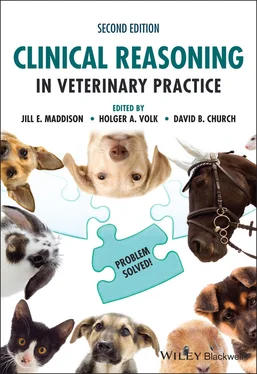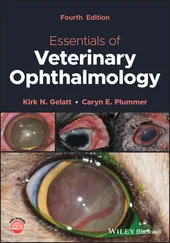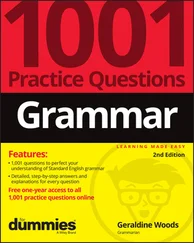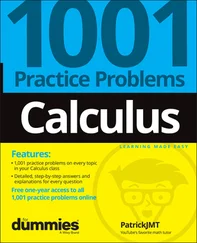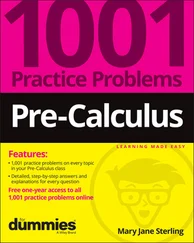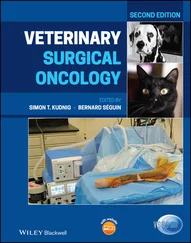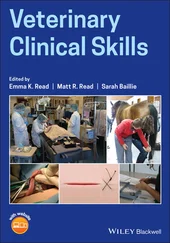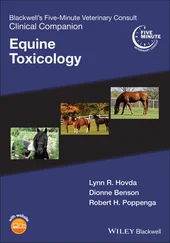Clinical Reasoning in Veterinary Practice
Здесь есть возможность читать онлайн «Clinical Reasoning in Veterinary Practice» — ознакомительный отрывок электронной книги совершенно бесплатно, а после прочтения отрывка купить полную версию. В некоторых случаях можно слушать аудио, скачать через торрент в формате fb2 и присутствует краткое содержание. Жанр: unrecognised, на английском языке. Описание произведения, (предисловие) а так же отзывы посетителей доступны на портале библиотеки ЛибКат.
- Название:Clinical Reasoning in Veterinary Practice
- Автор:
- Жанр:
- Год:неизвестен
- ISBN:нет данных
- Рейтинг книги:3 / 5. Голосов: 1
-
Избранное:Добавить в избранное
- Отзывы:
-
Ваша оценка:
- 60
- 1
- 2
- 3
- 4
- 5
Clinical Reasoning in Veterinary Practice: краткое содержание, описание и аннотация
Предлагаем к чтению аннотацию, описание, краткое содержание или предисловие (зависит от того, что написал сам автор книги «Clinical Reasoning in Veterinary Practice»). Если вы не нашли необходимую информацию о книге — напишите в комментариях, мы постараемся отыскать её.
Clinical Reasoning in Veterinary Practice: Problem Solved! 2nd Edition
Clinical Reasoning in Veterinary Practice: Problem Solved! 2nd Edition
Clinical Reasoning in Veterinary Practice — читать онлайн ознакомительный отрывок
Ниже представлен текст книги, разбитый по страницам. Система сохранения места последней прочитанной страницы, позволяет с удобством читать онлайн бесплатно книгу «Clinical Reasoning in Veterinary Practice», без необходимости каждый раз заново искать на чём Вы остановились. Поставьте закладку, и сможете в любой момент перейти на страницу, на которой закончили чтение.
Интервал:
Закладка:
Table of Contents
1 Cover
2 Title Page Clinical Reasoning in Veterinary Practice Problem Solved! Second Edition Edited by Jill E. Maddison Department of Clinical Science and Services, The Royal Veterinary College London, UK Holger A. Volk Department of Small Animal Medicine and Surgery, University of Veterinary Medicine Hannover Hannover, Germany David B. Church Department of Clinical Science and Services, The Royal Veterinary College London, UK
Problem Solved!
3 Copyright Page
4 About the Editors
5 List of Contributors
6 Preface
7 Acknowledgements
8 CHAPTER 1: Learning to learn and its relevance to logical clinical problem‐solving References
9 CHAPTER 2: Introduction to logical clinical problem‐solving
10 CHAPTER 3: Vomiting, regurgitation and reflux ASSESSMENT OF THE PATIENT REPORTED TO BE VOMITING
11 CHAPTER 4: Diarrhoea
12 CHAPTER 5: Weight loss WEIGHT LOSS DUE TO DECREASED APPETITE WEIGHT LOSS WITH NORMAL OR INCREASED APPETITE Maldigestion Malabsorption Malutilisation
13 CHAPTER 6: Abdominal enlargement
14 CHAPTER 7: Weakness
15 CHAPTER 8: Fits and strange episodes
16 CHAPTER 9: Sneezing, coughing and dyspnoea SNEEZING AND NASAL DISCHARGE COUGHING Coughing with minimal dyspnoea DYSPNOEA Coughing and dyspnoea Dyspnoea with minimal coughing
17 CHAPTER 10: Anaemia
18 CHAPTER 11: Jaundice
19 CHAPTER 12: Bleeding Diagnostic approach to the bleeding patient Local disorders causing bleeding Systemic bleeding disorders
20 CHAPTER 13: Polyuria/polydipsia and urinary incontinence Polyuria/polydipsia Diagnostic approach to the patient with PU/PD or impaired urine concentration Urinary Incontinence
21 CHAPTER 14: Gait abnormalities
22 CHAPTER 15: Pruritus, scaling and otitis Pruritis Scaling Otitis
23 CHAPTER 16: Problem‐based approach to problems of the eye
24 CHAPTER 17: Problem‐based approach to small mammals – rabbits, rodents and ferrets Common small mammal clinical scenarios
25 CHAPTER 18: Problem‐based clinical reasoning examples for equine practice Colic (abdominal pain) Diarrhoea Coughing Pallor and Anaemia
26 CHAPTER 19: Principles of professional reasoning and decision‐making References
27 Index
28 End User License Agreement
List of Tables
1 Chapter 2 Table 2.1 Diagnostic biases in clinical medicine.
2 Chapter 3 Table 3.1 Secondary gastrointestinal causes of vomiting in cats and dogs. Table 3.2 Oesphageal disorders causing regurgitation.
3 Chapter 4 Table 4.1 Characteristics of small and large bowel diarrhoea. Table 4.2 Causes of acute small bowel diarrhoea in dogs and cats. Table 4.3Causes of chronic small bowel diarrhoea in dogs and cats. Table 4.4 Causes of acute and chronic large bowel diarrhoea in dogs and cats...
4 Chapter 7Table 7.1 Neuroanatomical localisation within the neuromuscular system. Neur...Table 7.2 Potential diagnoses for episodic or exercise‐induced weakness.Table 7.3 Potential diagnoses for persistent weakness.
5 Chapter 8Table 8.1 Clinical characteristics of episodic disorders.Table 8.2 Potential differential diagnoses for central vestibular disease. L...Table 8.3 Potential differential diagnoses for ‘peripheral’ vestibular disea...Table 8.4 Potential differential diagnoses for syncope.Table 8.5 Diagnostic tests to consider for dogs and cats presenting with sei...
6 Chapter 12Table 12.1 Changes in coagulation tests associated with bleeding disorders....
7 Chapter 13Table 13.1 Pathophysiology of PU/PD.Table 13.2 Summary of mechanisms for azotaemia and impaired urine concentra...Table 13.3 Differential diagnosis of confirmed polyuria/polydipsia or impai...
8 Chapter 14Table 14.1 Neuroanatomical localisations and their most common deficits.Table 14.2 Differentials to be considered for musculoskeletal disorders.Table 14.3 Differentials to be considered for myelopathies.
9 Chapter 16Table 16.1 Causes of the red eye. Table 16.2Causes of the abnormal‐sized pupil. Table 16.3Causes of the opaque eye. Table 16.4Causes of the wet eye. Table 16.5Causes of the blind eye.Table 16.6 Causes of the abnormal‐sized eye.
10 Chapter 17Table 17.1 Causes of gut stasis in rabbits.Table 17.2 Causes of dyspnoea in rats .Table 17.3 Causes of pruritic alopecia in a guinea pig .Table 17.4 Causes of non‐pruritic alopecia in a guinea pig .Table 17.5 Examples of causes of hindlimb weakness in ferrets.
11 Chapter 18Table 18.1 Causes of colic in adult horses.Table 18.2 Causes of colic in neonates and weanling foals.Table 18.3 Causes of acute diarrhoea in adult horses.Table 18.4 Causes of chronic diarrhoea in adult horses.Table 18.5 Causes of diarrhoea in neonates and weanling foals.Table 18.6 Causes of coughing in adult horses.Table 18.7 Causes of coughing in neonates and weanling foals.Table 18.8 Causes of acute and chronic blood loss in adult horses and foals... Table 18.9Causes of haemolysis in adult horses and foals.Table 18.10 Causes of decreased red cell production in adult horses and foa...
12 Chapter 19Table 19.1 Analysis of the problem, as perceived by the stakeholders in vet...
List of Illustrations
1 Chapter 1 Figure 1.1 Visual representation of the staircase of memorisation. Figure 1.2 Introducing a diagram into the sequence of actions to improve und... Figure 1.3 How the structure of the chapters leads to understanding and memo... Figure 1.4 Memorisation benefit through subvocalisation. Figure 1.5 Benefits of having a learning buddy.
2 Chapter 2 Figure 2.1 Skill acquisition pathway. (This pathway can apply to the acquisi... Figure 2.2 Clinical reasoning step‐by‐step. Figure 2.3 Clinical reasoning step‐by‐step: define and refine the problem. Figure 2.4 Clinical reasoning step‐by‐step: define and refine the system. Figure 2.5 Clinical reasoning step‐by‐step: define the location. Figure 2.6 Clinical reasoning step‐by‐step: define the lesion. Figure 2.7 Clinical reasoning step‐by‐step: recap.
3 Chapter 3 Figure 3.1 The relationship between the elements of the emetic reflex.
4 Chapter 7Figure 7.1 The five‐finger rule.
5 Chapter 8Figure 8.1 The combination of clinical signs determines the location of the ...Figure 8.2 The five‐finger rule.Figure 8.3 The onset and clinical course of a disease can narrow down aetiol...Figure 8.4 Intra‐cranial causes for epileptic seizures.Figure 8.5 Extra‐cranial causes for (reactive) seizure.Figure 8.6 Flowchart to help define the lesion.Figure 8.7 Algorithm for peripheral vestibular work‐up.
6 Chapter 10Figure 10.1 Blood smear from a dog showing reticulocytes. New methylene blue...Figure 10.2 A blood smear from a dog with immune‐mediated haemolytic anaemia...Figure 10.3 Blood smear from a dog with schistocytes and acanthocytes indica...
7 Chapter 11Figure 11.1 Bilirubin metabolism.
8 Chapter 12Figure 12.1 Very simplified overview of the process leading to the formation...
9 Chapter 14Figure 14.1 Factors to be considered for refining the problem in patients wi...Figure 14.2 Clinical deficits to help differentiate between musculoskeletal ...Figure 14.3 Diagnostic work‐up for the musculoskeletal system.Figure 14.4 Neuroanatomical localisations. SCS, spinal cord segments.
10 Chapter 15Figure 15.1 Flow diagram to the diagnostic approach of pruritus in companion...Figure 15.2 Flow diagram to the diagnostic approach of scaling presentation ...Figure 15.3 Flowchart outlining the diagnostic approach to canine otitis.
11 Chapter 19Figure 19.1 The main influences on professional reasoning and decision‐makin...
Читать дальшеИнтервал:
Закладка:
Похожие книги на «Clinical Reasoning in Veterinary Practice»
Представляем Вашему вниманию похожие книги на «Clinical Reasoning in Veterinary Practice» списком для выбора. Мы отобрали схожую по названию и смыслу литературу в надежде предоставить читателям больше вариантов отыскать новые, интересные, ещё непрочитанные произведения.
Обсуждение, отзывы о книге «Clinical Reasoning in Veterinary Practice» и просто собственные мнения читателей. Оставьте ваши комментарии, напишите, что Вы думаете о произведении, его смысле или главных героях. Укажите что конкретно понравилось, а что нет, и почему Вы так считаете.
